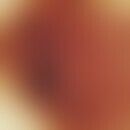Synonym(s)
Epidermolysis bullosa dystrophica albapapuloidea; epidermolysis bullosa dystrophica (Pasini); Epidermolysis bullosa hereditaria et albopapuloidea; Epidermolysis papulo-alboides-Pasini; Pasini-Pierini Syndrome; Pasini Syndrome
HistoryThis section has been translated automatically.
Pasini
DefinitionThis section has been translated automatically.
Autosomal dominant inherited, generalized, dystrophic epidermolysis.
You might also be interested in
EtiopathogenesisThis section has been translated automatically.
mutation of the COL7A1 gene mapped on chromosome 3p21.3. The mutation leads to reduced or absent synthesis of collagen type VII.
Animal experiments in collagen type VII-deficient mice showed that they produce the protein cochlin in a reduced way. This in turn leads to increased bacterial colonisation of wounds.
ManifestationThis section has been translated automatically.
In children, usually after the age of 5.
ClinicThis section has been translated automatically.
Image of the epidermolysis bullosa dystrophica dominans. Additionally perifollicular, ivory-coloured, flat to lenticular, partly confluent papules, especially in the lumbosacral region or at the acra. These are very typical for the clinical picture. Hardly any mucosa or tooth damage.
HistologyThis section has been translated automatically.
- Subepidermal blistering.
- Electron microscopic: Dermolytic blistering below the lamina densa. Reduced number of normal or rudimentary anchoring fibrils.
Differential diagnosisThis section has been translated automatically.
External therapyThis section has been translated automatically.
- Antiseptic solution such as octenidine (e.g. Octenisept), quinolinol solution(e.g. Chinosol 1:1000), R042 or potassium permanganate solution(light pink) to prevent secondary infections.
- Avoidance of mechanical irritations and pressure points on the skin, diet rich in vitamins and minerals.
Internal therapyThis section has been translated automatically.
Successes with high-dose glucocorticoid pulse therapy(100-150 mg/day prednisolone) have been described. Treatment is generally cautious, as blister formation decreases continuously and disappears within the first years of life.
LiteratureThis section has been translated automatically.
- Dharma B et al (2001) Dominant dystrophic epidermolysis bullosa presenting as familial nail dystrophy. Clin Exp Dermatol 26: 93-96
- Horn HM, Tidman MJ (2002) The clinical spectrum of dystrophic epidermolysis bullosa. Br J Dermatol 146: 267-274
- Jonkman MF et al (1999) Dominant dystrophic epidermolysis bullosa (Pasini) caused by a novel glycine substitution mutation in the type VII collagen gene (COL7A1). J Invest Dermatol 112: 815-817
- Shenefelt PD et al (1993) Successful treatment of albopapuloid epidermolysis bullosa (Pasini's variant) wirh pulse topical corticosteroid therapy. J Am Acad Dermatol 29: 785-786
Incoming links (5)
Dystrophic epidermolysis bullosa ; Pasini, agostino; Pasini-pierini syndrome; Pasini syndrome; Quinolinol sulphate monohydrate solution 0,1 % (nrf 11.127.);Outgoing links (8)
Connective tissue nevus; Epidermolysis bullosa dystrophica dominans, generalized; Glucocorticosteroids; Lichen sclerosus (overview); Octenidine; Papel; Potassium permanganate; Prednisolone;Disclaimer
Please ask your physician for a reliable diagnosis. This website is only meant as a reference.




